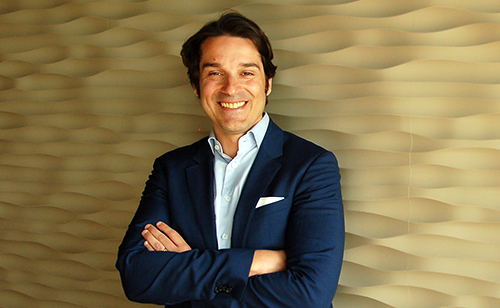How sophisticated strategies build resilient portfolios

Stefano Torti, Group Head of Asset Management & Advisory at Banque Havilland S.A., shares his insights and expertise, on an interview with Paperjam
Stefano Torti, Group Head of Asset Management & Advisory at Banque Havilland says that in the current climate, investors should be willing to expose themselves to new portfolio construction techniques and new asset classes under the guidance of private banks and wealth managers.
2022 was almost unprecedented year in terms of multiple crises that affected financial markets. Indeed, according to Stefano Torti, Group Head of Asset Management & Advisory at Banque Havilland, last year “was one of the very few on record where almost all asset classes were posting negative returns in a synchronised way.” Torti says that 2022 was in some ways even worse than the hits the market took in 2008, when at least government bonds were producing positive results. “So that’s really a problem, especially for multi-asset investors, so-called balanced investors, who tend to rely on traditional diversification.”
Stefano Torti, Group Head of Asset Management & Advisory at Banque Havilland says that in the current climate, investors should be willing to expose themselves to new portfolio construction techniques and new asset classes under the guidance of private banks and wealth managers.
But Torti is optimistic that 2023 will be a more stable year, or at least not as unpredictable as 2022. “The main risks that we saw materialising in 2022 are now quite visible and most market participants are aware of the situation with the war, the potential risk of escalation, the situation with inflation, with rising interest rates. So, let’s say there are known unknowns, as we call them. What is usually more problematic for investment is when something totally unexpected suddenly takes centre stage.”
Nevertheless, Torti says that evidence from last year showed that the only portfolios which proved to be resilient were those that tended to rely on more refined strategies. This can be more active asset allocation, risk management, or, more straightforwardly, to just allocate a part of the portfolio to alternative investments. “For example, we saw many hedge fund strategies perform very well. Trend-following, which is one of the very oldest hedge fund strategies, had a very exceptional year in 2022. So that shows that although it is simpler to just rely on equities and fixed income, if you want to build a portfolio that is more resilient, you need more active management and also more sophistication.”
“I think it is very important that wealth managers take the lead…to explain to different sets of investors who were not really exposing themselves to new ideas or new asset classes all the risks and opportunities
Stefano Torti
that the markets can provide.”
Inflation and interest rate hikes
One of the most dramatic consequences of last year’s geo-political instability was certainly inflation which, following aggressive central bank interest rates hiking, triggered one of the largest bonds bear market of the last century. The IMS forecasts global inflation at 6.6% in 2023 and 4.3% for 2024. In that vein, Torti argues that the financial markets can live with a downward trend or one that leans towards stabilisation. “So overall, I think inflation should not be considered only an enemy when it comes to investing. But it’s very important to have the right allocation when you are in an inflationary environment, as we are right now.”
On the other hand, central banks have been using interest rate hikes to combat inflation and both the Fed and the ECB have stated that more rises in base rates are likely in 2023. “I would say the that’s where the main risk lies for this year. Obviously, it’s very hard to predict where the central banks will stop, because it will depend on all the data that we will see in the coming months.” There has been reassuring data when it comes to energy, foods prices and container shipping costs. However, there is the risk of more sticky inflation when it comes to services and wages. “That’s what could probably ruin the party at some point. At the beginning of the year we had very strong returns across the board, but if we experience too stubborn inflation, or too sticky inflation, then maybe central banks will need to step even higher on interest rate tightening and the market is not really pricing in that scenario too much.”
All of which underlines Torti’s point that the role of private banks and wealth managers will become more and more decisive “I think is very important that wealth managers take the lead, obviously respecting the current regulations, to explain to different sets of investors, those who were not really exposing themselves to new ideas or new asset classes, all the risks and opportunities that the markets can provide.”
(source: Paperjam)

